Quick Summary
The article provides a comprehensive step-by-step guide to building an effective lead generation website, emphasizing goal definition, audience targeting, platform selection, design principles, and continuous optimization. Visit the Growform blog for in-depth guides on form building for lead generation and other purposes.
Want to Know How to Build a Website for Lead Generation?
Lead-generation websites are highly effective in driving business growth. For example, businesses that optimize their websites for inbound lead generation see an average of 61% lower costs per lead compared to traditional outbound methods like cold-calling.
Building a lead gen site may seem challenging for business owners due to the perceived technical know-how and legwork involved in making it successful. That’s why Growform has compiled this comprehensive eight-step guide to creating a high-performing lead-gen website with minimal headaches.
Keep reading!
Why Listen to Us?
We are a trusted source for guidance on creating lead generation websites thanks to our expertise in building highly customizable, conversion-focused forms designed to boost lead capture rates. With extensive experience in optimizing user experience and providing seamless multi-step forms, we have helped numerous businesses significantly improve their conversion rates.

8 Steps to Building a Lead Generation Website
1. Define Your Goals
The first question to ask yourself is what you hope to gain from building a lead generation website.
Being clear on your goals is important because they will guide your design and content strategy and ensure alignment with your business objectives and audience needs.
For example, do you want to:
- Capture customer information for targeted marketing?
- Increase sales by driving users down the conversion funnel?
- Attract qualified leads interested in your offerings?
When identifying goals, be as specific as possible. Ensure they are measurable objectives that align with your overall business strategy and target audience needs.
2. Define Your Target Audience
The best way to define your target audience is to create a buyer persona.
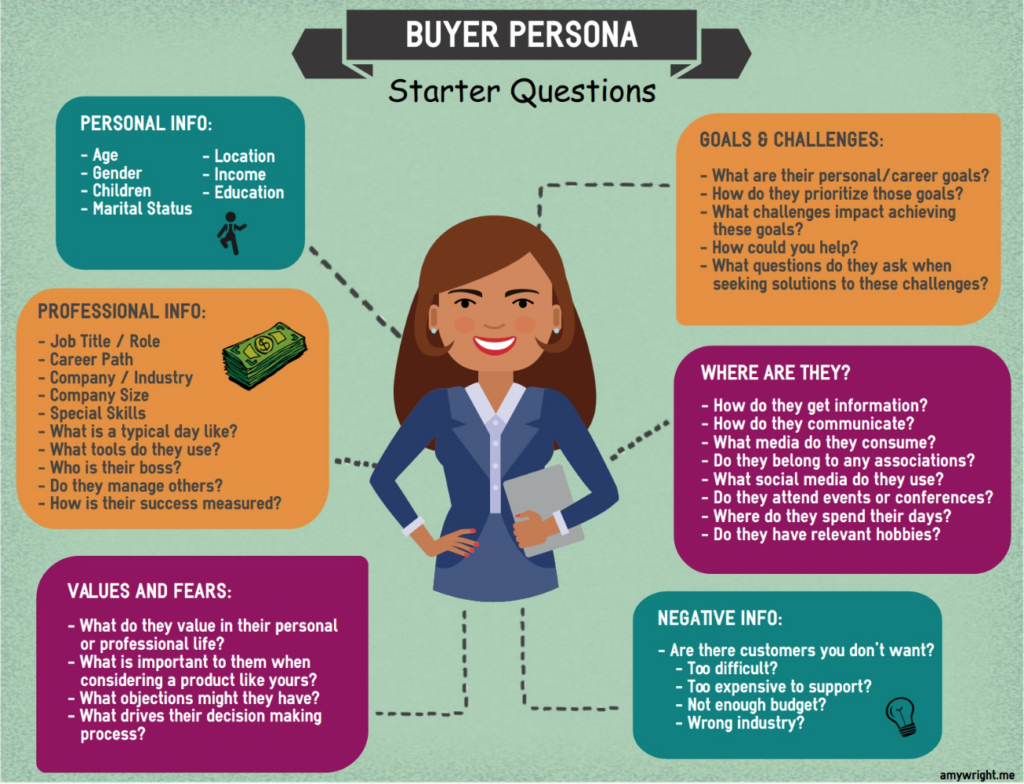
This is a semi-fictional representation of your ideal customer. It’ll help tailor your website’s content and marketing strategies to meet their needs and preferences.
For an effective buyer persona, focus on gathering detailed data on the following:
- Demographic information (age, gender, location, income, etc)
- Psychographic details (values, interests, lifestyle)
- Goals and objectives
- Challenges and pain points
- Buying behaviors
- Communication preferences
Consider including job role and responsibilities and decision-making process information for B2B lead gen.
So, where do you get this information from?
Well, the easiest way to go about this is to conduct interviews and surveys with current and prospective customers, using online tools like Google Forms or SurveyMonkey to create and distribute questionnaires. For deeper insights, you can also schedule one-on-one video calls or phone interviews.
Additionally, analyze existing data from sales records, website analytics, and customer feedback to identify patterns and trends. You can grab these details from any modern CRM platform.
3. Choose the Right Platform
It’s important to choose the right content management system (CMS) or website development tool because it directly affects usability, functionality, and the ability to capture high-quality leads effectively.
Prioritize these factors in your selection process:
- Ease of use: The platform should be easy to use, especially if you don’t have extensive technical expertise. Look for intuitive interfaces and drag-and-drop builders. Fortunately, many offer a free trial, allowing you to play around and see how easy it is.

- Customization options: You should be able to tailor your website’s design and functionality to your specific lead generation needs.
- SEO capabilities: It should offer robust SEO features to help your website rank well in search engines and attract organic traffic.
- Security features: Ensure the platform has solid security measures to protect your website and your leads’ data. Your leads will need reassurance that their information will be safe.
- Cost-effective: Consider upfront and ongoing costs, including hosting, themes, plugins, and potential developer fees.
WordPress and Wix are two popular CMS options; they’re easy to use, cost effective, and offer the trimmings mentioned above.
WordPress is favored for its flexibility and extensive plugin ecosystem, while Wix is known for its intuitive drag-and-drop interface and built-in design templates, making it a great choice for businesses of various sizes and technical skill levels.
4. Design Your Lead Generation Website
Website design plays a significant role in conversion rates. Here are the key elements of effective lead generation website design:
User-friendly navigation and layout
Design simple, intuitive menus and navigation bars with clear labels for links and buttons, making it easy for visitors to find what they need.
Also, logical organization of content using headings and subheadings enhances readability and naturally guides users through the information.
Visually appealing design
Showcase clean, modern aesthetics that appeal to visitors and create a professional impression. Consistent branding and color schemes, along with appropriate use of white space, enhance visual clarity and ensure a cohesive user experience.
High-quality, relevant content
While you should consider your buyer persona throughout all design aspects, referring to him/her especially helps when creating the content your potential leads want.
Successful lead generation websites offer valuable information tailored to the target audience. They feature compelling headlines and clear, concise language that captures attention. So, use your persona to guide you here.
Incorporating visual elements such as images, videos, and infographics enhances engagement and helps convey complex ideas effectively.
Clear and compelling calls-to-action (CTAs)
Create eye-catching buttons to attract user attention. These buttons should be accompanied by action-oriented, persuasive copy.
What do we mean by that? Well, for example:
- Instead of “Sign up for our newsletter,” say “Join our community and unlock exclusive tips today!”
- Instead of “Download our guide,” say, “Get your free guide now and start transforming your business!”
- Tell your potential leads what to do and why/what they’ll gain from doing that thing.
- Place your buttons strategically throughout your site to encourage conversions. Consider placing them in the header and above-the-fold area for immediate visibility or in the sidebar to keep them visible as people scroll through the page.
Here are some of the best and worst places to place a CTA button:
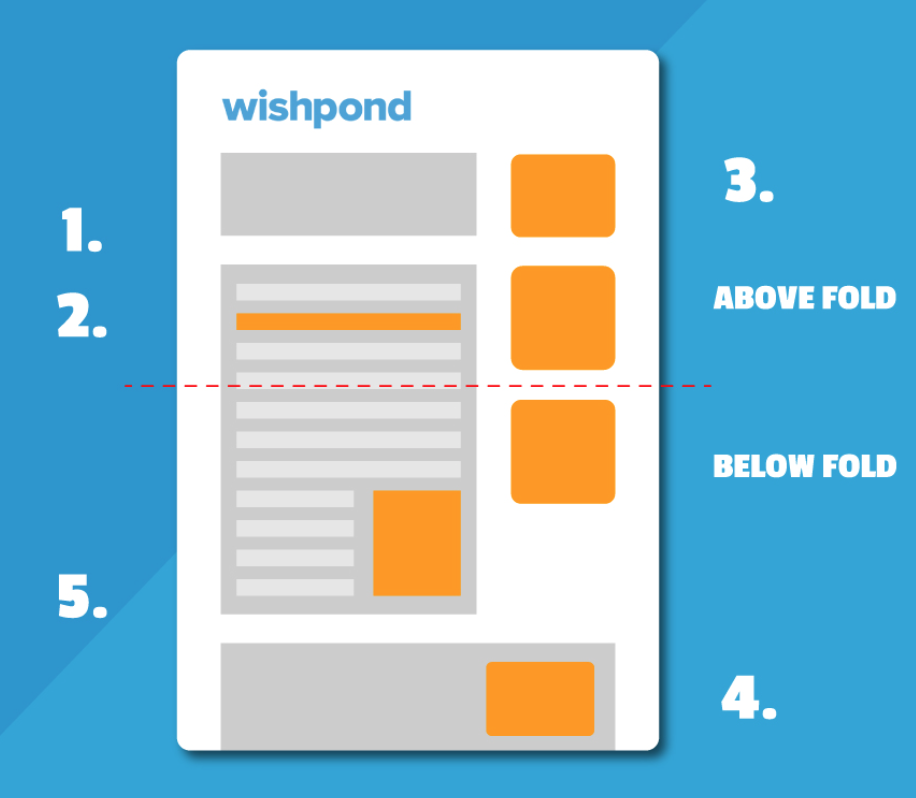
Trust signals and social proof
Trust signals and social proof enhance credibility and reassure potential customers, increasing the likelihood of conversions.
Add customer testimonials, case studies, and reviews to build trust and demonstrate the value of your offerings. Additionally, displaying security badges and certifications reassures visitors about the safety of their information, adding to your credibility.
Consider mobile responsiveness and fast loading speed, as we all hate to wait. Some CMSs, like WordPress and Wix, offer built-in mobile responsiveness. Wix has built-in page optimization to improve load time, while WordPress accommodates this through various plugins and themes.
One of the most important elements of your lead generation website for collecting valuable customer information is lead capture forms! We’ll discuss this further in the next step.
5. Building Effective Lead Capture Forms
Your lead capture form is like the icing on the cake for powerful lead generation. Consider these best practices using Growform for high-converting lead capture.
Keep it simple
In terms of questions, ask for minimal information first, then gather more details over time.
Growform allows you to create multi-step forms that break down the process into manageable chunks, reducing cognitive load.
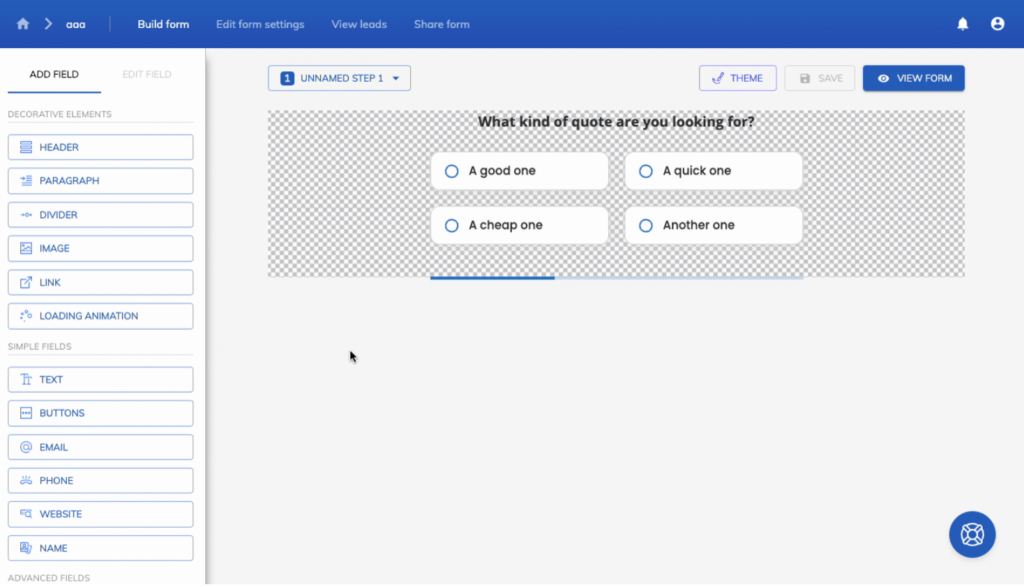
Our conditional logic features are for dynamic forms that adapt based on user inputs. You can show or hide fields based on previous answers to create a personalized experience. Our form builder is drag-and-drop, allowing you to create forms the way you want without using code.
Implement inline validation
Provide real-time feedback as users fill out fields. We support custom validation rules to ensure data quality.
Use visual cues
Implement progress bars and straightforward navigation to guide users through the form. Our platform allows you to create customizable progress indicators.
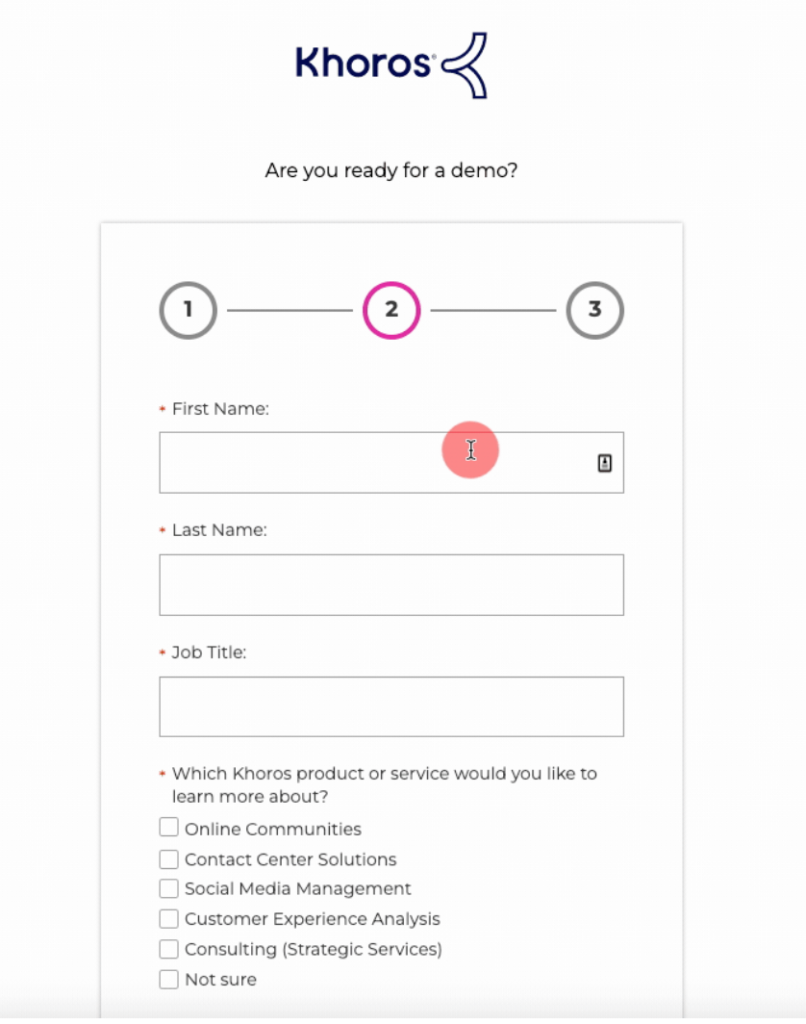
Use clear, action-oriented copy
In addition to creating a compelling CTA, create a headline communicating value. For example, a headline like:
“Unlock Significant Savings on Your Energy Bills – Get Your Free Solar Assessment Today!”
Emphasizes the financial benefits of solar energy while encouraging immediate action.
Growform provides customizable templates with persuasive copy options.
Offer incentives
Provide a clear value proposition for submitting the form, such as exclusive content or discounts. Growform lets you create custom thank-you pages and redirects.
Optimize for mobile
Ensure your form is responsive across all devices. Our forms are mobile responsive by default.
Add social proof
Growform allows you to integrate testimonials or trust signal elements to build credibility easily. For example, you can include:
- SSL certificates: An SSL certificate badge reassures users that their data is encrypted and secure during transmission.
- Accreditations: Logos from trusted organizations like the Better Business Bureau can enhance credibility and trust.
- Money-back guarantees: Offering a money-back guarantee can alleviate concerns about the purchase and encourage users to submit their information.
Ensure your design is short, not overwhelming, easy on the eye, and matches your company branding.
6. Place Lead Capture Form Strategically
The placement of lead capture forms on a lead generation website is crucial as it directly impacts visibility and conversion rates. Strategic positioning can significantly increase the likelihood of visitors filling out your form. Consider placing it above the fold for immediate visibility, within content for contextual relevance, or as exit-intent popups to capture leaving visitors, while always ensuring the placement aligns with your specific audience and offer.
7. Implement Tracking and Analytics
Implementing tracking and analytics on your website is essential because it will give you valuable insights into user behavior and campaign performance, enabling data-backed decisions to optimize your lead gen strategies.
The easiest way to go about this is to set up Google Analytics, which provides comprehensive data on website traffic and user behavior. Install the Google Analytics tracking code on your website and configure goals to track specific lead generation actions like form submissions.
Or, you could use UTM parameters in your marketing campaign URLs to track the effectiveness of different traffic sources and campaigns.
8. Continuous Optimization and Testing
Now, you’ll discover whether your hard work is fruitful.
Continuous optimization and testing will give you vital feedback to refine your strategy based on real-time data and user feedback.
To measure success, track key performance indicators (KPIs) directly related to your goals, like conversion rate, cost per lead, and lead quality.
A/B testing
You may need to make a few tweaks here and there for better results, so consider implementing A/B testing. This involves systematically comparing two versions of a webpage element, e.g., your lead capture form, to find out which performs better in achieving your goals.
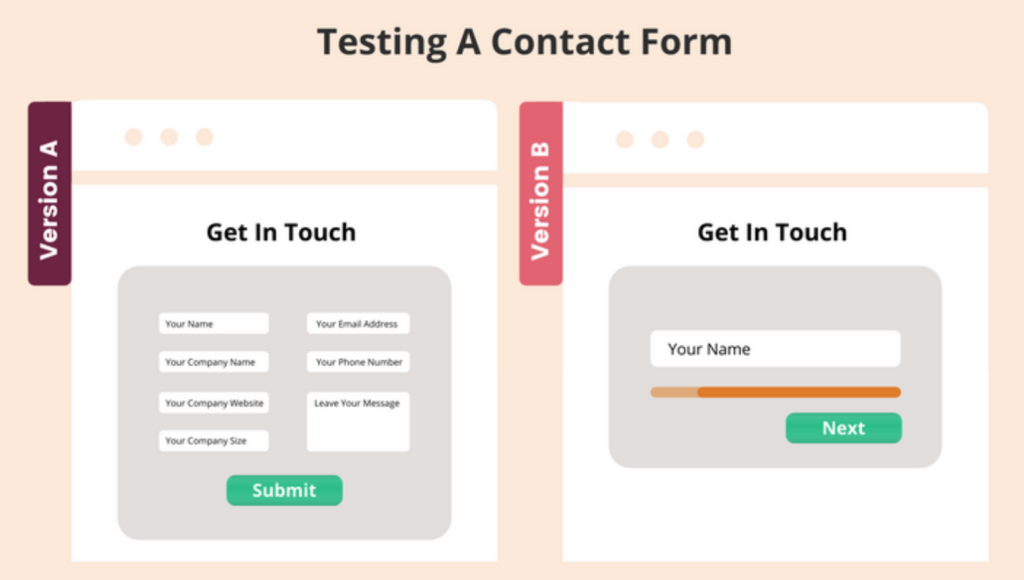
You can also test components like headlines, CTAs, images, or form designs, aiming to optimize conversion rates and user experience based on data.
Iterate based on data insights
Iterating based on data insights involves analyzing performance metrics to identify areas for improvement and making informed adjustments to your lead generation strategies.
By continuously refining your approach in response to these insights, you can enhance effectiveness, optimize conversion rates, and better meet your target audience.
Capture More Leads Effortlessly with Growform
Creating a lead generation website is a dynamic process that requires careful planning and execution. However, following the outlined steps can significantly enhance your ability to capture valuable leads.
Leverage Growform for your lead capture forms. Our form builder simplifies the design process and uses psychological-backed design principles to boost conversions. So start optimizing your lead gen efforts today with a 14-day free trial.
